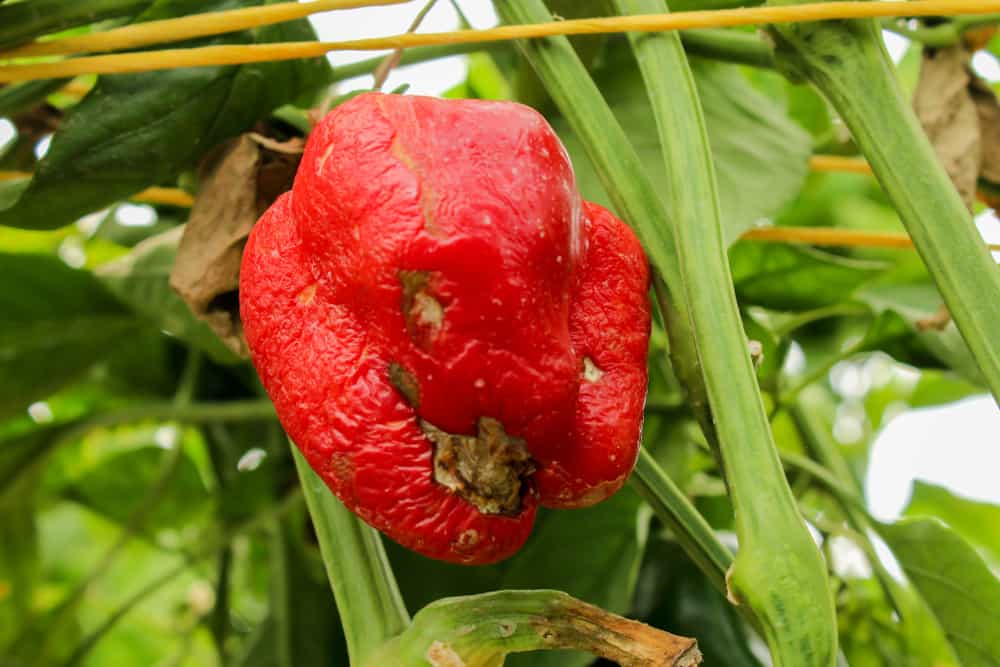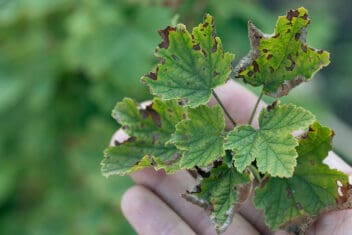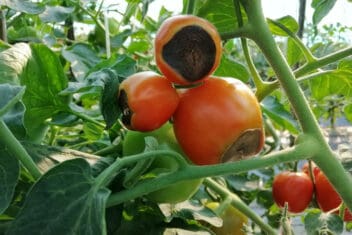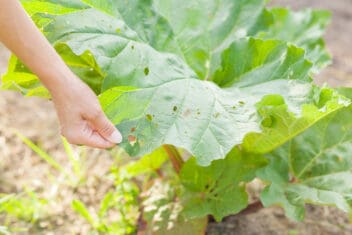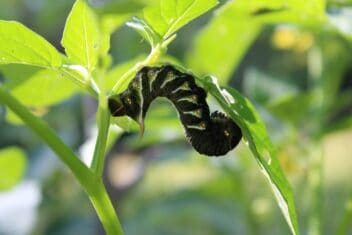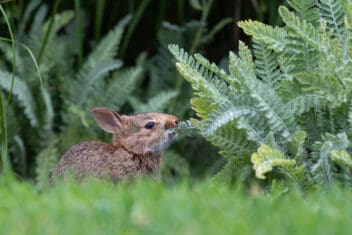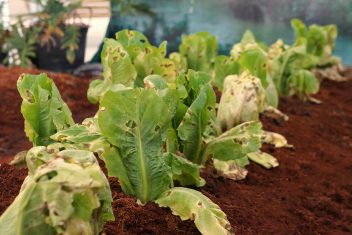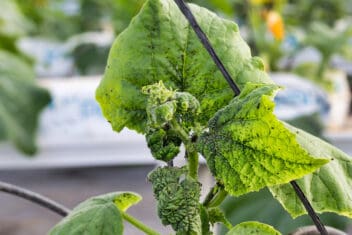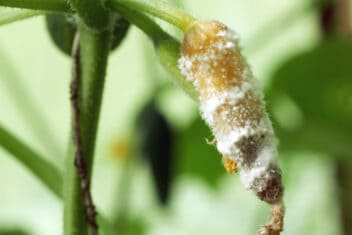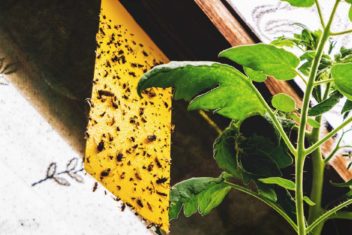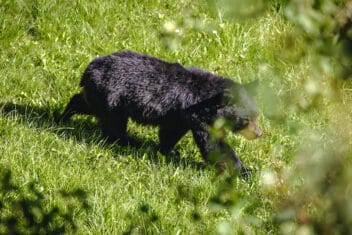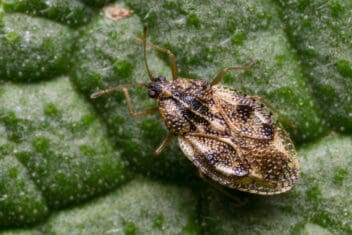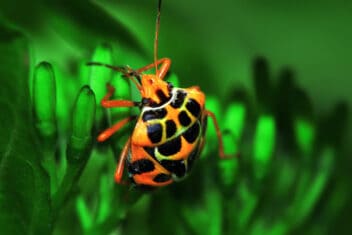Peppers are absolute superstars of the average vegetable garden. Whether you’re growing sweet or spicy varieties, they add bursts of color (and spectacular flavor) to the yard as well as the table. Although these babies don’t have too many issues for you to deal with when growing them, there are a few problems you may have to deal with.
Below are some of the most common problems growing peppers, and how to sort them out.
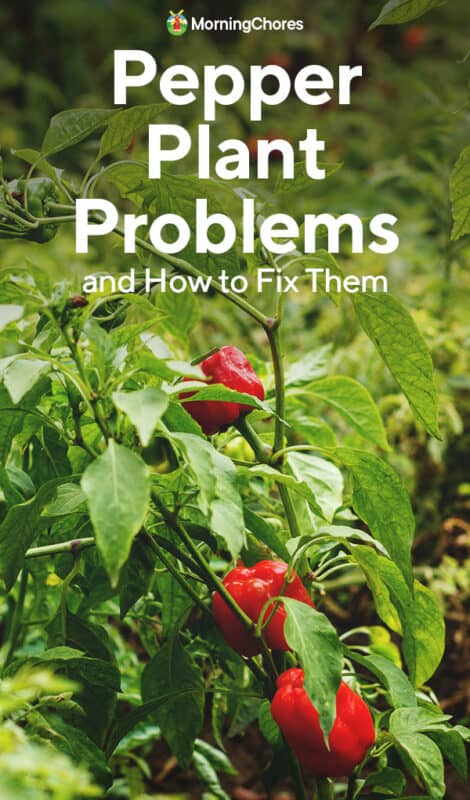
Pepper Growing Problems to Watch Out For
The following are the major problems growing peppers you may have to contend with. The good news is that peppers tend to be some of the most low-maintenance plants around. As a result, you might only deal with a couple of these issues over the course of your gardening life.
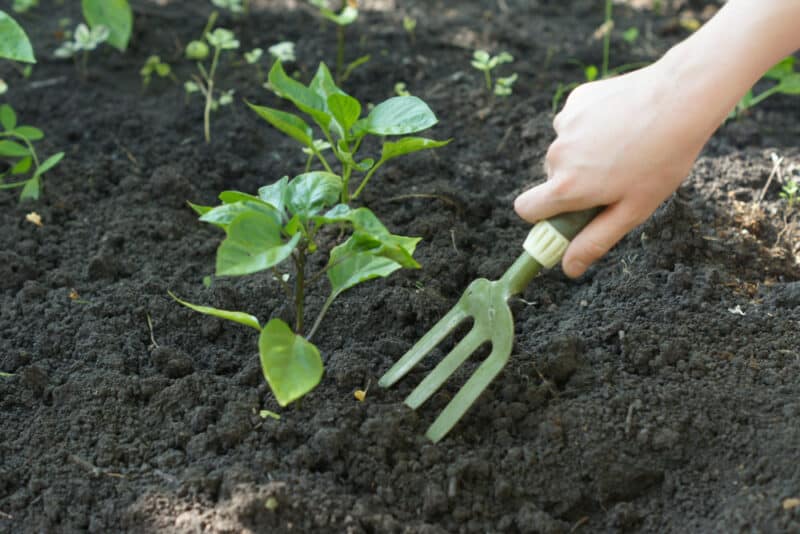
I’ve been growing various types of peppers for over 20 years and have only dealt with two of these problems, ever. In fact, even in mid-January when it’s -30°C/-22°F outside, I have a potted jalapeno plant growing merrily on my bedside table.
A few different insect and fungal species may wreak havoc on your pepper plants. Sadly, although these plants are off the menu for most herbivores, that doesn’t stop bugs and pathogens from devouring them.
However, as long as you rotate your crops regularly, offer your plants the type of soil they like best, companion plant with marigolds and nasturtiums, and keep your pepper plants well-watered, they should do just fine. Just make sure to check them daily to keep an eye on them.
Early detection can mean the difference between a great harvest, and having to cull your entire garden.
1. Failure to Thrive
One of the main reasons why pepper plants fail to flourish is an improper growing situation. These plants require slightly acidic, well-draining soil, and a ton of full sun. Work plenty of well-aged compost and either bone meal or blood meal into the soil before planting, as well as a draining medium like perlite.
If the soil in your garden is less than ideal, consider growing in raised beds or pots instead. Make sure the soil is ideal for containers so it doesn’t get compressed. Your peppers will need 6-8 inches of good soil in order to thrive. And be sure to observe your property to determine which patches get the most sun. That’s where your peppers and tomatoes need to go.
2. Lots of Foliage, but Few Flowers

This is a surefire sign of nutrient imbalance. Nightshade plants need plenty of phosphorous in order to trigger their fruiting and flowering phases. If there’s too much nitrogen (N) in the soil and insufficient phosphorous (P), then your plants will get leafy, not fruity.
Aim for fertilizers that have low N and higher P, and that should sort the problem out nicely.
3. Pepper Fruits Aren’t Forming
Are the flowers just falling off your pepper plants? Or they’re failing to mature into fruits? This is one of the most common problems growing peppers, and is simply a matter of temperature. Peppers require a lot of heat and sunshine in order to produce fruit. As a result, they just won’t develop if temperatures drop below 60°F/15°C. I’m in zone 4b and I’ve encountered this issue a few times.
The key is to wait until seasonal temperatures don’t dip below 60°F at night before planting your peppers. If you have a short growing season, start your seeds indoors six weeks before temperatures are expected to be optimal. Alternatively, get more mature seedlings from a local garden center and plant those as the season heats up.
Here’s an additional tip: choose smaller varieties if your growing season is short. Miniature bell peppers, or small, fiery species like filius blue, jalapenos, or cayennes are ideal. Additionally, if your area is known for random hailstorms or sudden temperature dips at the height of summertime, grow your peppers in a greenhouse instead.
4. Stunted or Shriveled Fruits
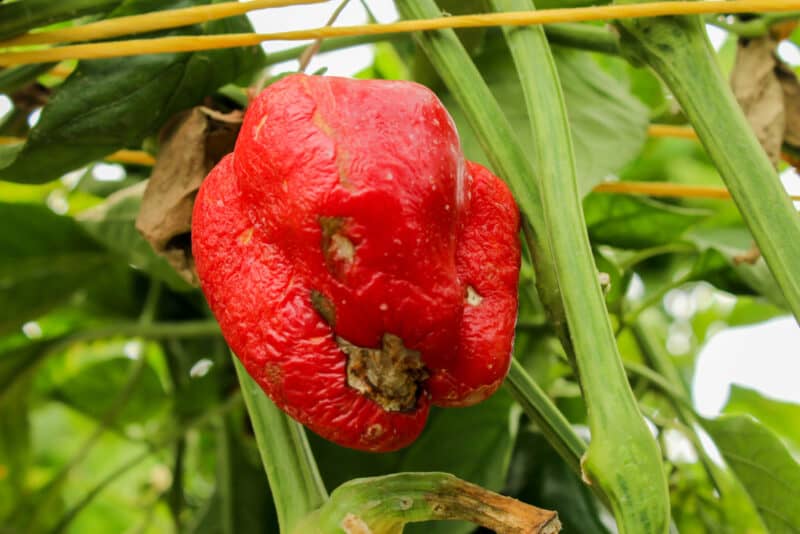
Your peppers might be smaller than they should be, or misshapen. They might not even have seeds inside when you cut them open. This is caused by poor or incomplete pollination.
The way to improve this problem in the future is by companion planting with herbs and flowers that draw pollinators. Plant some borage, basil, and oregano around your nightshade plants (peppers and tomatoes) and they’ll beckon honeybees, bumblebees, and other flying friends to help with pollination.
5. Peppers Aren’t Changing Colors
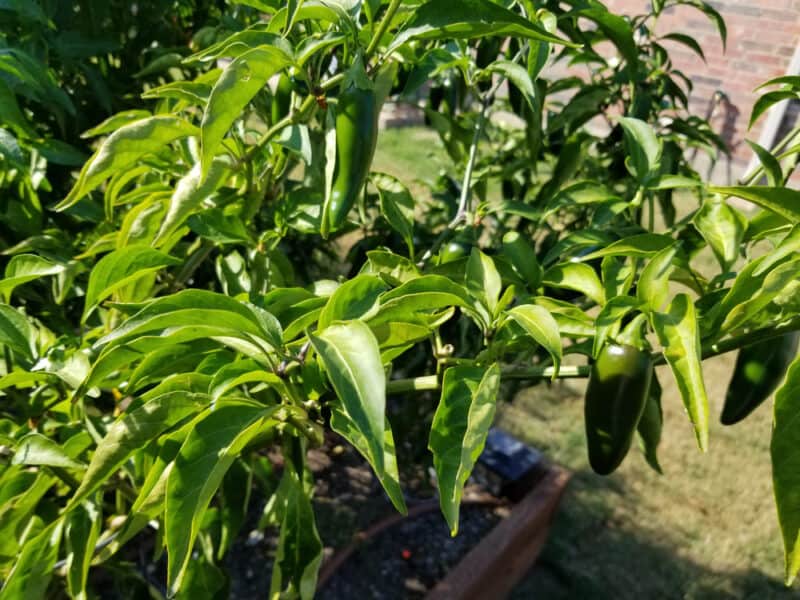
If you’re getting frustrated because your peppers aren’t changing color, you just need to cultivate a bit more patience. Peppers naturally change hue when they’ve reached full maturity. Leave them on the vine as long as possible and they’ll shift to their final color before you know it.
Alternatively, you can pick them as they just start to change, and let them ripen fully on a sunny windowsill.
6. Hot Peppers Aren’t Hot
This is usually caused by your peppers being fussed over a bit too much, rather than stressed. If they get too much phosphorous and potassium from enthusiastic fertilization, then the peppers will be big and juicy, rather than compact and fiery.
The same thing can happen if you offer them too much water. If you want your peppers to stay hot and fiery, then let them get a bit stressed. You want small, spicy peppers, not huge, sweeter ones.
7. Blossom End Rot
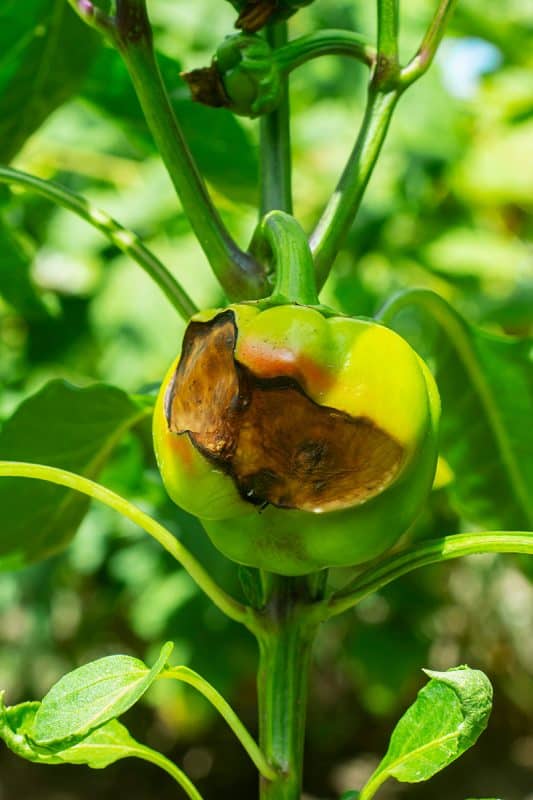
Are there wet-looking, rotting patches on your fruit’s bottoms? This is “blossom end rot”, as it happens on the butt end, where the blossom falls off. It’s caused by insufficient calcium during the flowering period.
You might assume the solution is to chuck a bunch of calcium into your soil, but the problem actually stems from your growing peppers not being able to take up any calcium that is in the soil. Until you fix that issue, it doesn’t matter how much calcium is in the soil.
Plants need the right amount of water to take up nutrients. If you give your plants too much or too little water as their growing, they won’t be able to move calcium throughout their system. Also, trying to force plants to grow too quickly with fertilizer can prevent them from getting enough calcium.
For more tips, check out our guide to blossom end rot.
8. Plants are Cut Off at Soil Level
This issue is usually caused by cutworms. These jerks live in the soil and come out after sunset, gnawing their way through anything in their path. You can go out at night with a flashlight and hunt them by hand: just drop them into a pail of hot, soapy water to kill them off. Alternatively, you can wrap cardboard cuffs around your seedlings’ stems to protect them.
I use empty toilet paper rolls specifically for this purpose. Cut them in half, and poke the seedlings’ stems through before planting. Then make sure the roll is pushed about 1″ into the soil to thwart cutworms and slugs.
9. Curled Leaves
Pepper leaves can curl due to insect damage, nutrient deficiencies, and water issues. For example, your peppers’ leaves may curl if they don’t get enough water. or they’re getting too much water and it isn’t draining off properly. Alternatively, they can curl if aphids or mites are sucking the life out of them.
This is a situation where you’ll diagnose the issue by process of elimination. If you inspect the plants and find aphids or mites, then you’ll know that’s the issue. Treat them with neem oil or organic pesticide, and make sure there are plenty of ladybugs around to help in the garden.
If you don’t see any insects, then poke your finger into the soil about an inch deep, a few hours after noon. Does the soil feel damp? Then you may be over-watering your pepper plants. In contrast, if the soil feels dry to you, then you aren’t offering them enough to drink.
10. Yellow, Falling Leaves
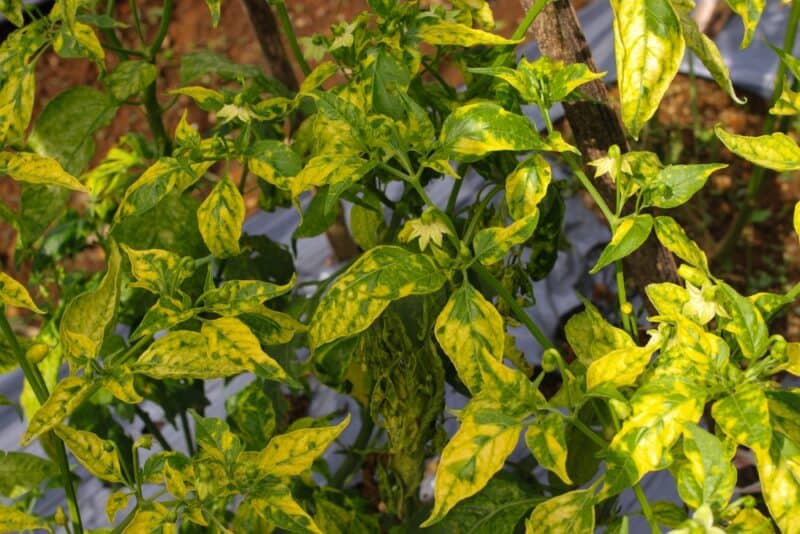
This can be caused by mosaic virus or spotted wilt virus. Neither of these can be treated, but you can avoid having to kill the entire plant if you catch the infection early. Pinch off affected leaves and burn them, then make sure to cut away any nearby weeds that may be harboring thrips or cucumber beetles.
You can try to avoid this issue by planting varieties that are resistant to tobacco mosaic virus. If they’re affected by cucumber mosaic virus, however, there’s really no treatment other than pull and burn.
11. Scorched-Looking Leaves
Did you know that it’s possible for pepper plants to get too much sun? If you’re in zone 10 or higher, then your plants might suffer a condition known as “sunscald”. The young, delicate fruits end up with white blisters on their skins, which can peel away to leave holes. As a result, the fruits can shrivel and dry up, eventually falling off the plant.
In extremely hot, sunny clients, it’s important to offer your pepper plants some shade during the hottest part of the day. Consider companion planting near taller species that can shade out your peppers between 11 am and 3 pm.
12. Leaves are Covered in Yellow-Ringed Holes
Bacterial leaf spot is a nasty infection that’s spread through touch. It causes gnaw-like holes on the leaves, which in turn will shrivel and then fall off. You can treat this with a copper-based bacterial fungicide if you catch it early—this way you won’t have to destroy all your plants.
13. Defoliation
Do your pepper plants’ leaves look as though they’ve become an all-you-can-eat buffet? Then you’re likely dealing with tomato hornworms, flea beetles, or slugs. You can get rid of flea beetles by planting catnip around your beds, and spraying your plants with neem oil.
As for the hornworms and slugs, you can pick those off by hand early in the morning, or after dusk. Scattering liberal amounts of diatomaceous earth around your plants can help to fend them off too. Additionally, consider letting your chickens, ducks, or Guinea fowl into your pepper beds to eat these insects. Just make sure to put your birds to bed safely so predators don’t get to them.
14. White Foam or Froth on the Stem and Leaves
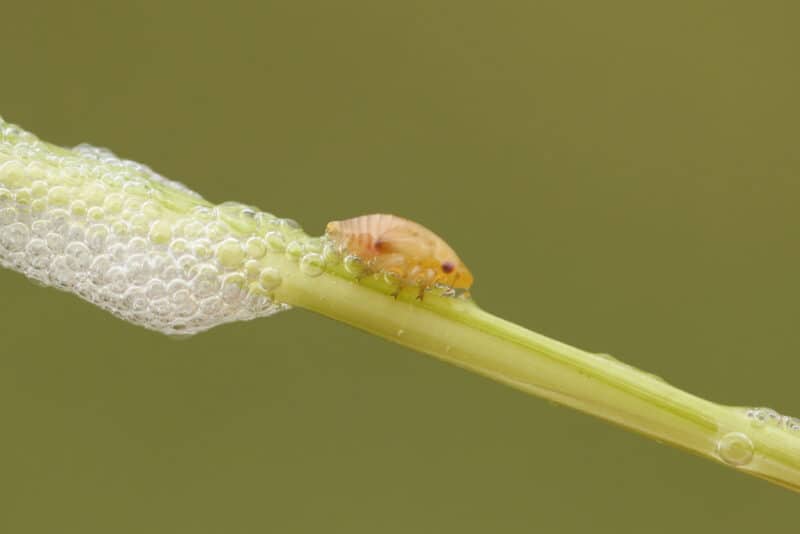
Welcome to spittlebug land. Ironically, one of the best deterrents for spittlebugs on your pepper plants is a homemade insecticide made with hot peppers. Use a blender to combine 2 cups of water with a handful of jalapeno or habanero peppers, 6–8 peeled garlic cloves, 2 tablespoons of ground cayenne peppers, and 2 teaspoons liquid Castille soap.
Transfer this to a spray bottle and hose your plants down with it. Let it sit for 24–48 hours, then wipe your plants down.
15. Brown Stripes on Stem/Plant Wilts and Falls Over
If this is the issue you’re contending with, you’re probably dealing with verticillium wilt. This pepper growing problem is a fungal disease that doesn’t have a cure, so you’ll have to pull up and burn any affected plants. The only way you can avoid this issue is by rotating your crops regularly.
Never plant nightshades in the same spot two years in a row. Additionally, don’t follow (or precede) nightshades with any cucurbits (cucumbers, squashes, pumpkins, or melons). Do a deep till of the soil and let the sun scorch out as much of the fungus as possible. Plant legumes or greens there the following season, and be sure to choose disease-resistant varieties.
16. Black or Brown Spots
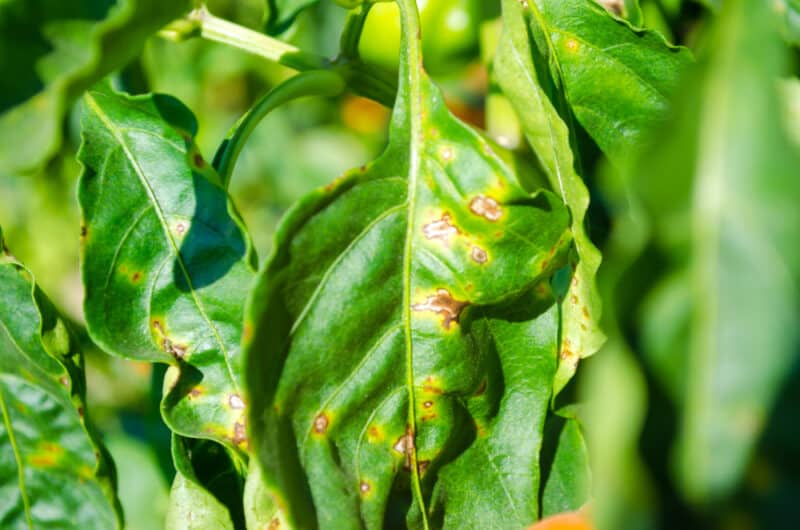
Early blight (Phytophthora blight) is caused by high temperatures in humid weather. It’s common in damp climates, especially when there’s a lot of rainfall and temps higher than 75F. There’s no way to treat it, and any affected plants will need to be destroyed.
The only way to avoid this issue is to practice regular crop rotation. Plant brassicas (kale, cabbage, etc.) and grains in affected beds after removing the peppers. Then don’t plant other nightshades there for at least four years.
17. White Fuzz Beneath Leaves
If you live in a hot, damp climate, you may have to contend with powdery mildew. This fuzzy mold can also pop up if plants have been watered from above too often. Aim to offer water via a soil-level drip line, or else water early in the morning so moisture has plenty of time to evaporate over the course of the day.
